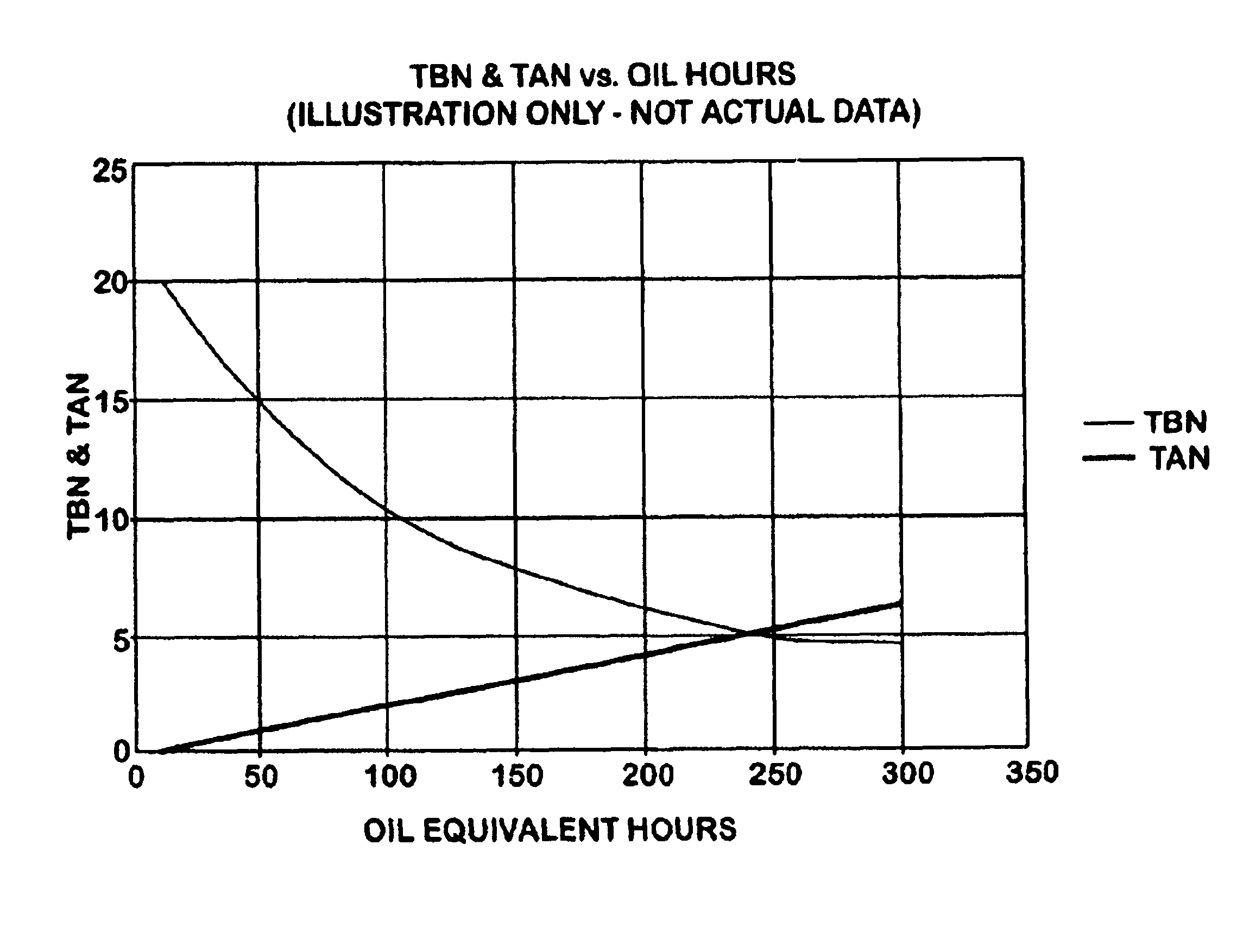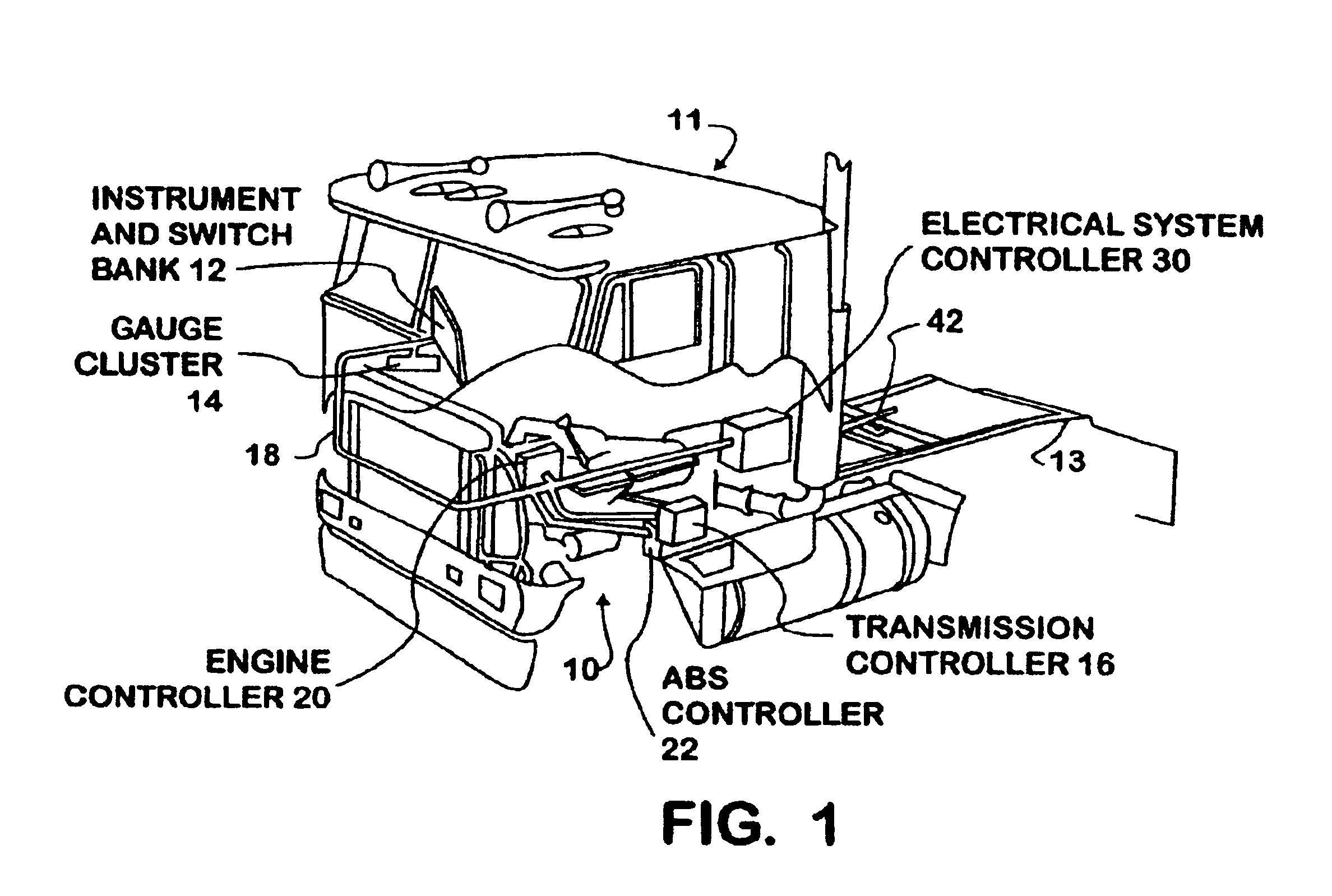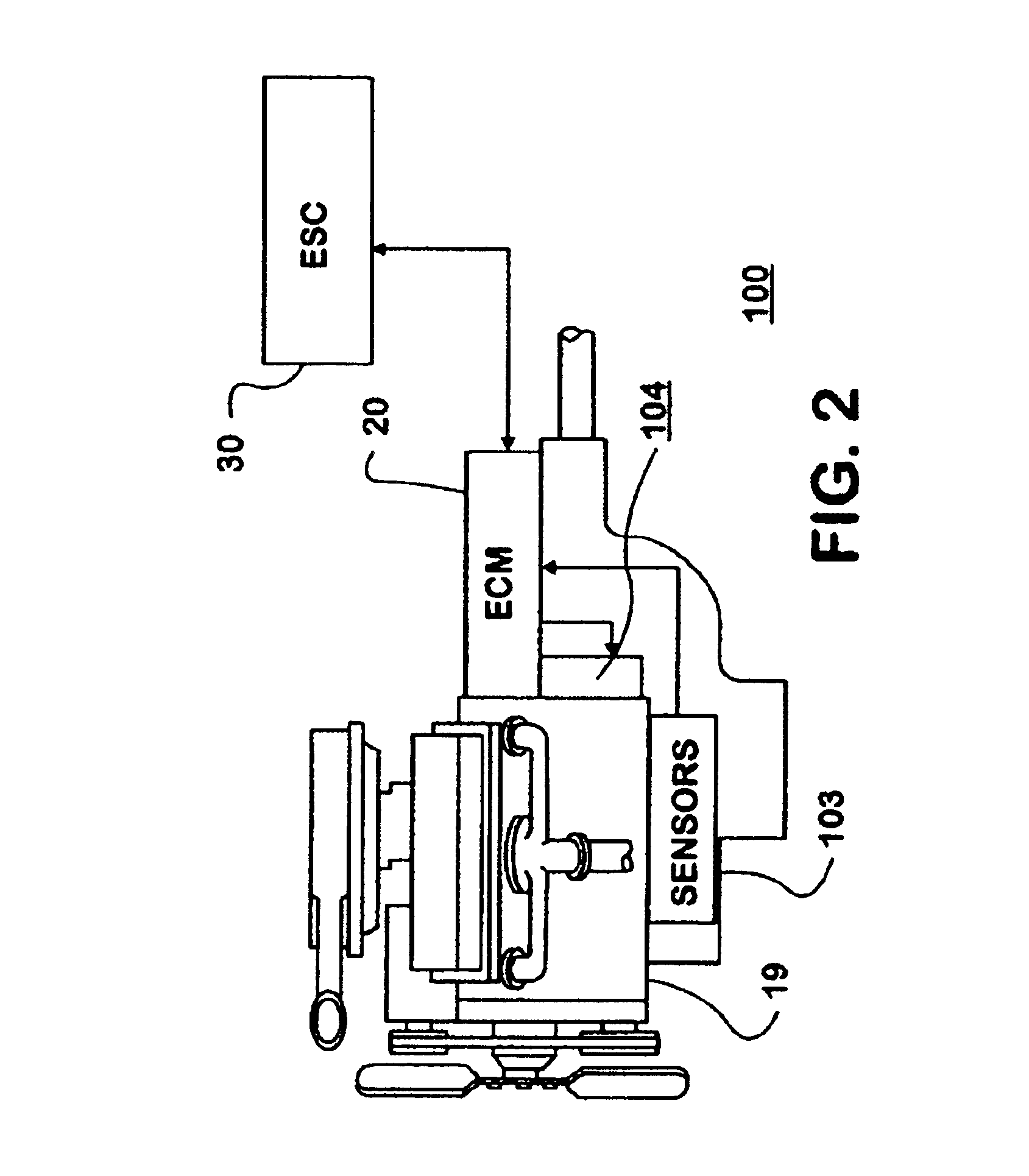Method of estimating engine lubricant condition
a technology of engine lubricant and condition estimation, which is applied in the direction of instruments, structural/machine measurement, transportation and packaging, etc., can solve the problems of high frequency maintenance, short useful life of lubricating oil, and high cost of changing lubricating oil. , to achieve the effect of reducing the cost of changing lubricating oil
- Summary
- Abstract
- Description
- Claims
- Application Information
AI Technical Summary
Benefits of technology
Problems solved by technology
Method used
Image
Examples
Embodiment Construction
[0030]Referring now to the figures and more particularly to FIG. 1, a perspective view illustrates a vehicle 11 and an electrical control system 10 installed on the vehicle. Vehicle electrical system 10 comprises a twisted pair (either shielded or unshielded) cable operating as a serial data bus 18. One node of bus 18 is an electrical system controller (ESC) 30, which is a higher level data processing component of electrical control system 10. ESC 30 manages a number of vocational controllers connected to bus 18 as nodes and disposed on vehicle 11. Preferably, bus 18 and the various nodes attached thereto form a controller area network (CAN).
[0031]Active vehicle components are typically controlled by one of a group of autonomous, vocational controllers, which include a gauge cluster 14, an engine controller 20, which is typically supplied with an engine 19 (shown in FIG. 2), a transmission controller 16, an auxiliary instrument and switch bank 12, and an antilock brake system (ABS) ...
PUM
| Property | Measurement | Unit |
|---|---|---|
| time | aaaaa | aaaaa |
| distance | aaaaa | aaaaa |
| temperature | aaaaa | aaaaa |
Abstract
Description
Claims
Application Information
 Login to View More
Login to View More - R&D
- Intellectual Property
- Life Sciences
- Materials
- Tech Scout
- Unparalleled Data Quality
- Higher Quality Content
- 60% Fewer Hallucinations
Browse by: Latest US Patents, China's latest patents, Technical Efficacy Thesaurus, Application Domain, Technology Topic, Popular Technical Reports.
© 2025 PatSnap. All rights reserved.Legal|Privacy policy|Modern Slavery Act Transparency Statement|Sitemap|About US| Contact US: help@patsnap.com



